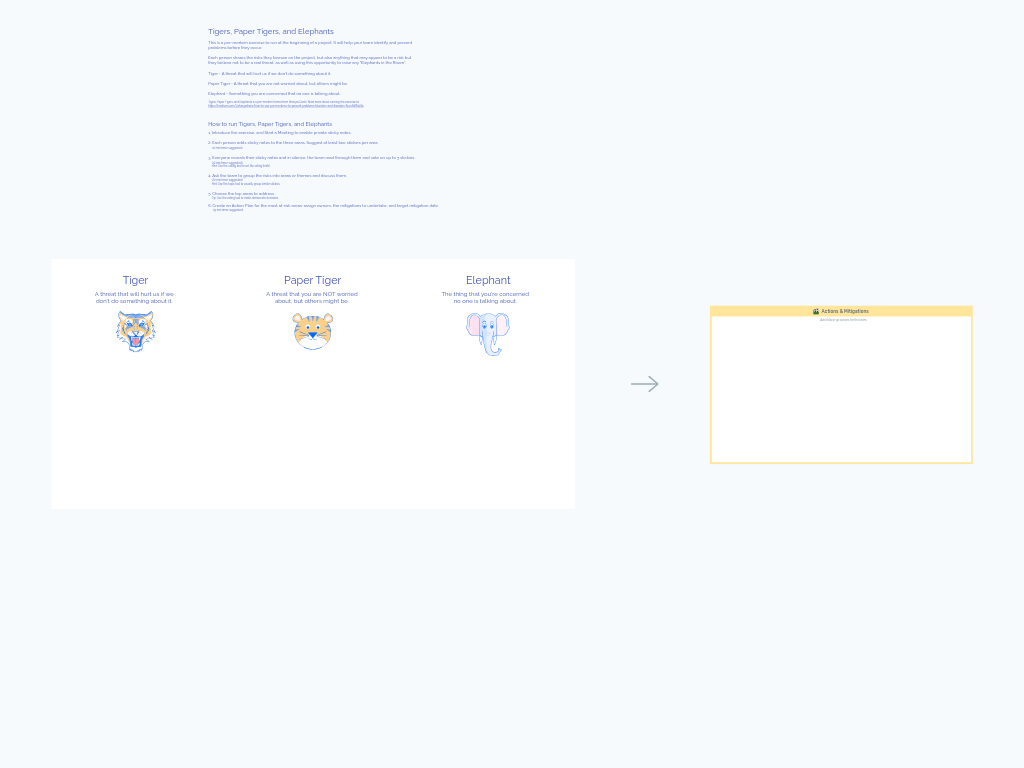RAID Analysis: Identify Risks, Assumptions, Issues, and Dependencies for Project Success
RAID analysis is a powerful project management technique that helps teams proactively identify and track potential roadblocks before they derail your project. This structured approach captures four critical elements—Risks, Assumptions, Issues, and Dependencies—providing a comprehensive view of factors that could impact your project's success.
What Is a RAID Analysis?
RAID analysis is a strategic planning framework that breaks down project uncertainties into four distinct categories:
- Risks: Potential future events that might negatively impact your project
- Assumptions: Factors you believe to be true but haven't verified
- Issues: Current problems already affecting your project
- Dependencies: External elements, resources, or deliverables your project relies on
Originally developed for IT projects, RAID analysis has become a versatile tool across industries for identifying and managing project variables. Unlike more casual risk assessment methods, RAID provides a structured approach to cataloging and addressing potential challenges throughout the project lifecycle.
Benefits & When to Use RAID Analysis
RAID analysis is particularly valuable:
- At project kickoff to establish a baseline understanding of challenges
- During major project phase transitions when new risks may emerge
- When experiencing unexpected roadblocks and needing to reassess
- For complex projects with multiple stakeholders or dependencies
- When transparency about potential issues is essential for stakeholder trust
Benefits include:
- Improved risk management through early identification and mitigation
- Enhanced team alignment on project challenges and dependencies
- Better resource allocation by anticipating potential blockers
- Increased project transparency for stakeholders and team members
- Continuous project monitoring through regular RAID log updates
How to Run a RAID Analysis Session
Introduction (5 minutes)
- Explain the purpose of RAID analysis and each category
- Clarify the difference between risks (potential future problems) and issues (current problems)
- Set expectations for the collaborative nature of the session
Individual Brainstorming (10 minutes)
- Have all participants independently add sticky notes to each quadrant
- For Risks: Identify potential future problems that might impact the project
- For Assumptions: Document things believed to be true but not confirmed
- For Issues: Note current problems already affecting the team
- For Dependencies: List external factors needed for project success
Group Discussion (15-20 minutes)
- Take turns reviewing contributions in each quadrant
- Remove duplicates and clarify ambiguous items
- Discuss severity, likelihood, and potential impact of each item
- Consolidate similar items where appropriate
Prioritization & Action Planning (15 minutes)
- Identify high-priority items requiring immediate attention
- Assign owners to track and address key items
- Determine mitigation strategies for significant risks
- Document verification plans for critical assumptions
Establish Review Cadence (5 minutes)
- Set a schedule for revisiting the RAID analysis (typically every 1-4 weeks)
- Determine how updates will be tracked between sessions
- Assign responsibility for maintaining the RAID log
Tips for a Successful RAID Analysis
- Be specific when describing each item—vague descriptions lead to vague actions
- Distinguish clearly between risks and issues—this is a common point of confusion
- Use the participant highlight feature (click participant icons) to track who contributed which items
- Keep your RAID log living—it should evolve throughout the project lifecycle
- Focus on actionable items rather than creating an exhaustive list of every possible concern
- Balance honesty with constructiveness—RAID analysis should identify challenges without becoming a complaint session
- Consider probability and impact when prioritizing which items to address first
- Revisit regularly—a one-time RAID analysis provides limited value compared to ongoing tracking
When conducted effectively, RAID analysis transforms from a simple documentation exercise into a powerful risk management tool that helps your team anticipate challenges, adapt to changing circumstances, and maintain focus on project success.



